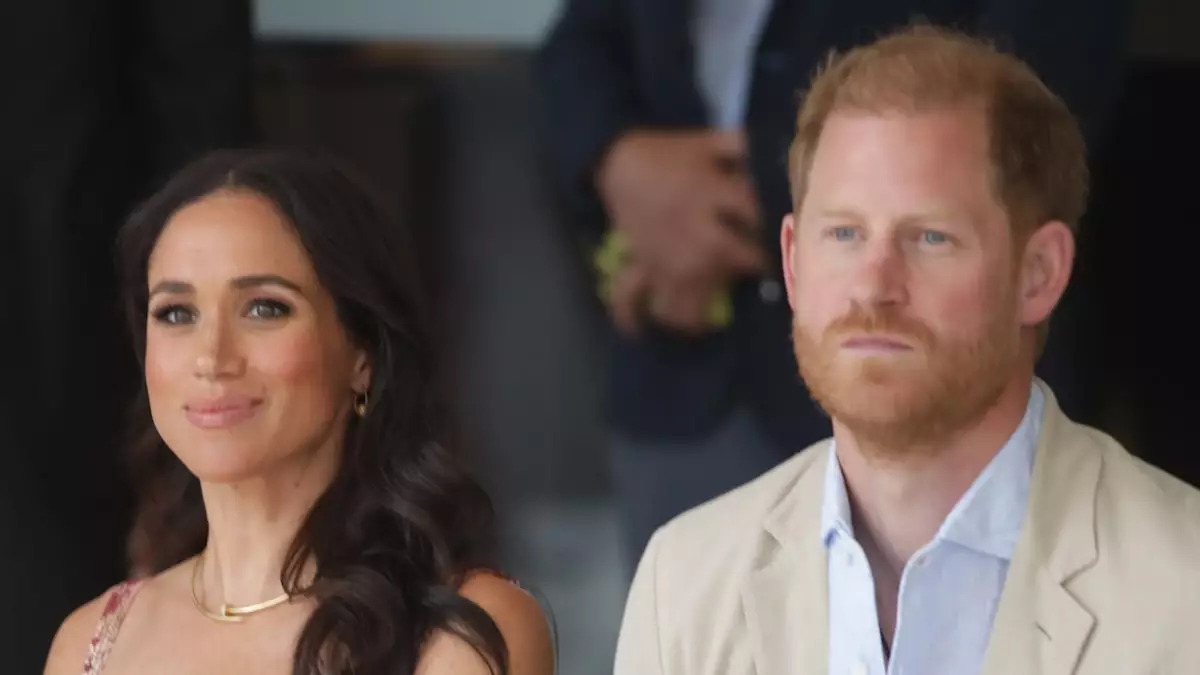The absence of Meghan Markle during Prince Harry’s recent trip to the United Kingdom has reignited discussions surrounding the Sussexes’ unique position within the royal family and their ongoing struggles with security concerns, media scrutiny, and their personal lives. As Harry makes his appearances alone, royal watchers are left to ponder the implications of his wife’s absence and the reasons behind their current lifestyle choices.
Meghan’s choice to remain in California with their children, Prince Archie and Princess Lilibet, rather than joining Harry for his commitments, emphasizes a growing sense of isolation from the royal family. This is not the first time that the Duchess of Sussex has decided to stay behind. Since their relocation to Montecito in 2020, this pattern has become more pronounced. While Harry engages in charitable acts and public duties, Meghan appears to have carved out a distinct path focused on family life.
This separation of roles is emblematic of a broader trend observed in contemporary royal duties, in which personal lives increasingly influence public personas. With each trip Harry undertakes alone, it seems more likely that the couple’s decision to step back from royal traditions has not only been a personal move but also a strategic one in preserving their family life amid overwhelming public scrutiny.
One of the most alarming elements of Prince Harry’s recent statements regarding Meghan’s absence is his disclosure of security concerns, particularly his fear that an acid attack might occur. In a poignant interview, Harry articulated the very real fears that accompany their status within the public eye. The fact that an individual may plan acts of violence against them is a grave concern that underscores the dangers facing modern public figures, especially those who, like Harry and Meghan, have chosen to speak openly about their struggles with mental health and the toxic nature of media coverage.
Harry’s decision not to bring Meghan back to the UK reinforces a critical point: the psychic burdens that often accompany royal life. This decision further complicates their public image, as it signals a reluctance to return to the hostile environment they left behind when stepping back from royal duties. By openly discussing his security worries, Harry not only gives voice to their struggle but also allows the public to reflect on the challenges faced by the royal family outside of their ceremonial duties.
The duo’s situation is further complicated by ongoing legal battles over security arrangements. Harry’s legal action against the Home Office can be seen as emblematic of a conflict between traditional royal practices and modern expectations for privacy and safety. This clashes with the public’s perception of royal entitlement versus the need for protection as human beings rather than mere figures of the royal institution.
While some criticize Harry for perceived demands regarding personal safety, others rally against the media’s role in creating narratives that endanger the couple’s well-being. In her reflections, royal expert Hannah Furness highlights the narrative around the Sussexes, suggesting that alignment on resolving these security issues would be necessary for Meghan and the children to feel comfortable returning to the UK. Harry’s public proclamations about their distress lead one to question how far the royal family has strayed from the realities of modern life and the safety nets that must be put in place for those under extraordinary pressure.
As Prince Harry continues his commitments in the UK while Meghan remains in the US, the Sussexes are forced to define their roles in both public and private spheres more stringently than ever. The curtain of royal engagement has drawn back to reveal a couple fighting for a semblance of normalcy amidst chaos. Their choices echo the sentiment that personal safety and the well-being of their family outweigh the traditions they once represented.
Looking ahead, it is likely that Harry will continue to balance his dual existence, navigating royal obligations while prioritizing family safety. Meghan’s decisions to remain in California herald a potential shift in how royal roles may evolve, reflecting a broader societal change towards valuing personal security, mental health, and autonomy over ceremonial duty. As they redefine what it means to be part of the royal family, the questions linger: What does this mean for the future of the monarchy, and how will public perception evolve as the narrative of the Sussexes continues to unfold?

